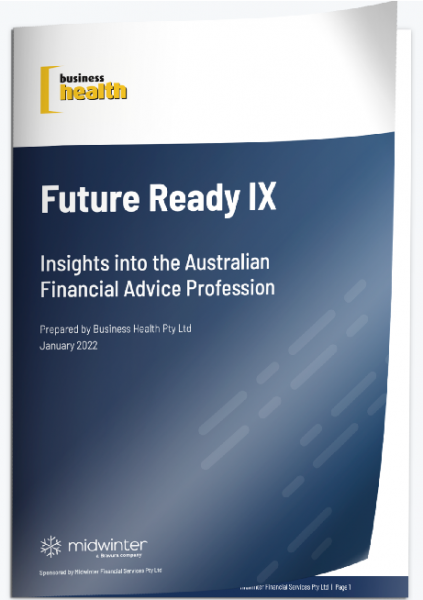
Financial planners maintain revenue but profits squeezed in 2021: Research
Financial planning practices have held average revenue steady at $1.2 million over the past two years despite escalating operational costs which have squeezed profitability, according to new research.
Average profit declined almost 15 per cent from 28.2 per cent to 24.0 per cent year-on-year as practices increased business investment and overhauled fee structures to adapt, according to the Future Ready IX report produced by Business Health in partnership with Midwinter Financial Services.
This report is based on in-depth business and financial data obtained from more than 200 advice practices through the Business Health HealthCheck business assessment tool.
Midwinter Chief Commercial Officer Steve Davison said the result is a testament to the resilience of the financial planning sector, which also overcame the challenge of pandemic lockdowns.
“Good advice businesses, and in particular great advice businesses, have navigated their way through substantial regulatory change and the COVID-19 pandemic, which caused significant market turmoil.
“They are successfully serving their clients by setting up their businesses with improved processes and technology that will allow them to become more efficient and grow profitability in the future.”
The advice sector has adapted to changes including the removal of grandfathered remuneration; product and marketing subsidies; new life insurance commission caps; and new educational requirements.
Business Health owner Rod Bertino said 74% of advice practices still expected to increase business revenue and 64% expected to increase profitability over the next 12 months.
“The good business owners have been willing to invest in what was needed to remain successful and sustainable. Their operational expenses are up given higher overall licensee costs, including professional indemnity insurance, while they’ve employed more staff to support their client-facing activities.”
Accessibility of advice remains an issue
Advisers are increasing their focus on top-tier clients that are willing to pay full-service advice fees.
The average number of clients per adviser declined slightly from 241 in 2019 to 228 last year, however the number of ‘A’ class clients increased from 79 to 105.
“This research indicates top tier clients are receiving advice through financial advisers, and our experience shows clients with simple needs increasingly have access to financial advice through their super fund,” Davison said.
“However, many Australians do not fit in either of these segments: this is a potential opportunity for advice businesses who can find ways to serve these mid-market clients profitably by establishing the right business models and technology.”
Advice businesses are pivoting to stay ahead
Advisers are also offering a greater array of services to make up for cuts to traditional income sources. The report found that more than half (55 per cent) of advice practice clients are aged 60-plus and almost half (48 per cent) are retired or no longer working.
“This aging client base means more practices are offering services they weren’t three or four years ago such as aged care and estate planning,” Bertino said.
The pandemic also prompted a shift away from the office, with just 37 per cent of businesses conducting almost all client appointments in their own offices compared to 55 per cent in 2020. This move to virtual meetings could in fact help advisers deliver a safer and more enjoyable experience for their client base.
The Business Health Future Ready IX report, which is sponsored by advice technology business Midwinter Financial Services, combines both qualitative and quantitative measures to reveal how advice practices are changing.
Click here to download the full report on Midwinter’s website.


